Top 8 Most Beautiful Castles In Denmark
Denmark is a Nordic country in Northern Europe. It is the most populous and politically central constituent of the Kingdom of Denmark, a constitutionally unitary state that includes the autonomous territories of the Faroe Islands and Greenland in the North Atlantic Ocean. As a lovely country with many gorgeous destinations and spots, its historic and beautiful castles will take your breath away. Get up close to the Danish crown jewels at Rosenborg Castle, spend a fun-filled day at Egeskov Castle or act out your best Hamlet impression at Kronborg Castle.
1. Frederiksborg Castle
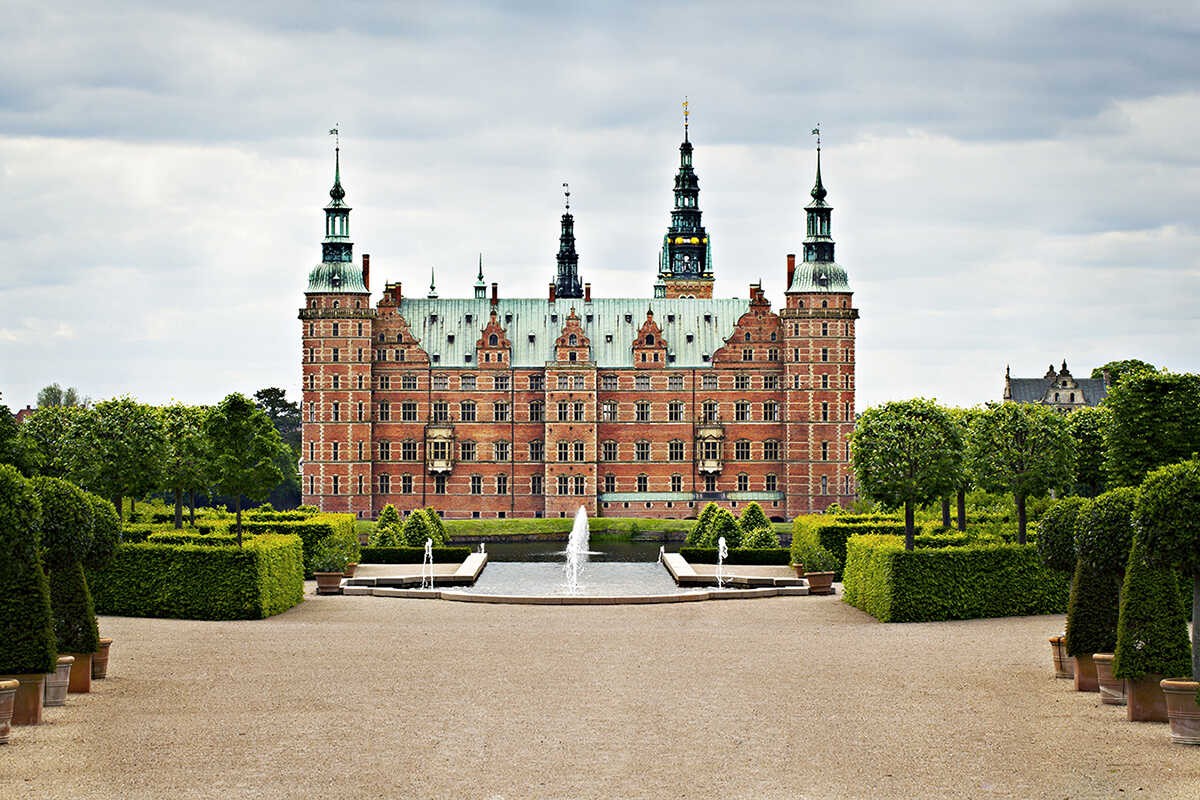 |
| Photo: Frederiksborg Museum of National History |
King Frederik II gave his name to the place, but it was his son Christian IV who built the Renaissance castle in 1600-1621. Frederiksborg Castle burned down in 1859 but was rebuilt and furnished as a museum on the initiative of the founder of the Carlsberg brewery.
The National History Museum at Frederiksborg Castle illustrates the history of Denmark with a significant collection of portraits, history paintings, art, and furniture from the last five centuries.
The Chapel Wing was spared when Frederiksborg Palace burnt down in 1859. It reflects the magnificence of the original castle. Every year several concerts are held in the chapel, and each Thursday you can experience concerts on the historic Compenius Organ from 1610. Outside services there is access to the castle chapel through the museum.
2. Kronborg Castle
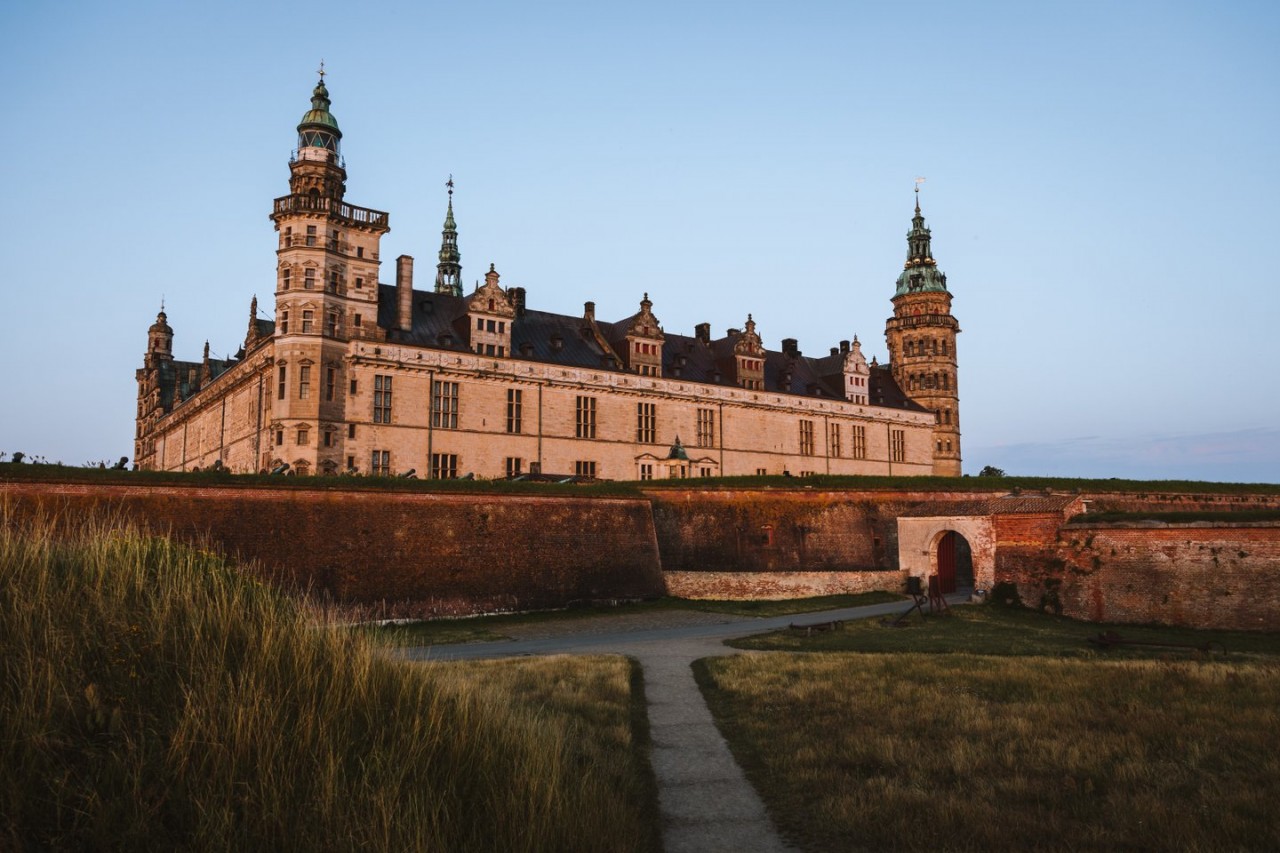 |
| Photo: Visit Denmark |
Kronborg is a castle and stronghold in the town of Helsingør, Denmark. Immortalized as Elsinore in William Shakespeare's play Hamlet, Kronborg is one of the most important Renaissance castles in Northern Europe and was inscribed on the UNESCO's World Heritage List in 2000.
The castle is situated on the extreme northeastern tip of the island of Zealand at the narrowest point of the Øresund, the sound between present Denmark and the provinces of present Sweden that were also Danish at the time the castle was built. In this part, the sound is only 4 kilometres (2.5 mi) wide, hence the strategic importance of maintaining a coastal fortification at this location commanding one of the few outlets of the Baltic Sea.
In 1629, a fire destroyed much of the castle, but King Christian IV subsequently had it rebuilt. The castle also has a church within its walls. In 1658, Kronborg was besieged and captured by the Swedes who took many of its valuable art treasures as war booty. In 1785 the castle ceased to be a royal residence and was converted into barracks for the Army. The Army left the castle in 1923, and after a thorough renovation, it was opened to the public.
3. Egeskov Castle
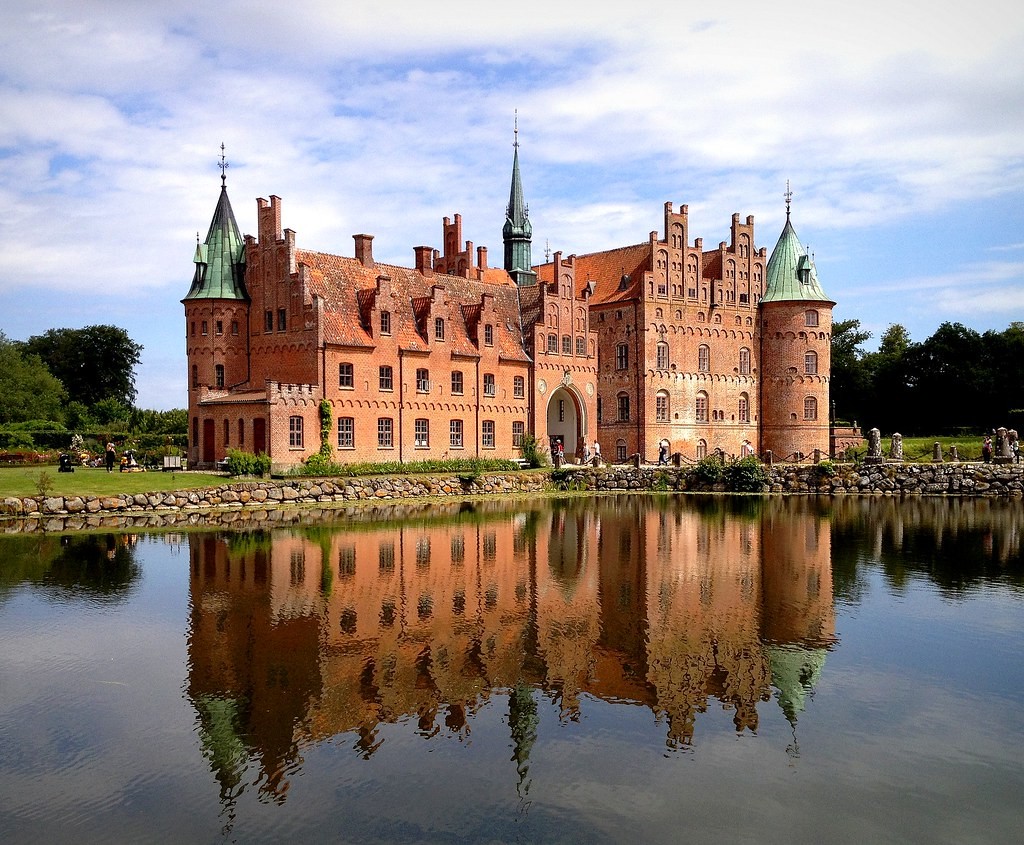 |
| Photo: Flickr |
Egeskov Castle is the best-preserved Renaissance castle in all of Europe, and although there are records of it dating back to the early 15th century, the current building dates back to 1544 and was commissioned by Frands Brockenhuus. It is characterized as being halfway between a castle and a fortress, due to the difficult political period of the time: a civil war is known as Grevens fejde, that was caused by the introduction of the Protestant Reformation and pushed most of the nobility to build houses that would allow them to find shelter from popular riots. The land on which Frands Brockenhuus built the castle belonged to the parents of his wife Anne Tinhuus, who had moved a few years before.
The parks of the castle were already open to citizens and did not undergo major transformations until 1959, the year in which a substantial restoration of the historic grounds began. In the following years, a series of exhibitions were progressively opened, which can still be visited, inside the existing service buildings or within new ones built to house such exhibitions.
The halls of the castle have been open to the public since 1986, and attract visitors looking to discover their beauty. It is also possible to stay overnight in one of the bedrooms that, during the day, is open to tourists.
Egeskov Castle has belonged to the Ahlefeldt-Laurvig-Bille family for 235 years, and they open it to the public as well as live in it, according to Wanted In Europe.
4. The Hermitage
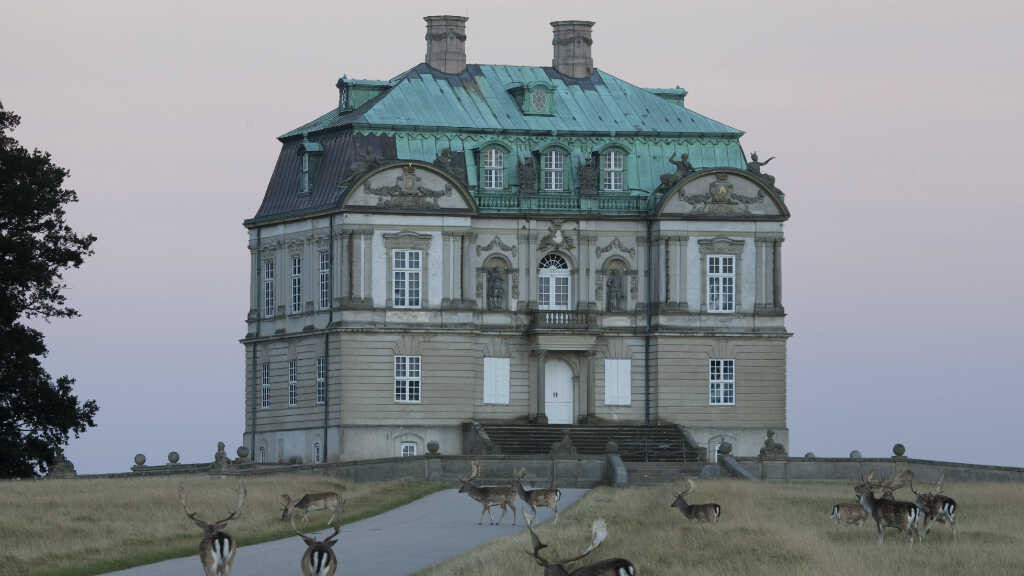 |
| Photo: Visit Copenhagen |
On a top of a hill in the Deer Park, you will find the Kings’ Hunting Lodge with views of the Øresund and the UNESCO-listed landscape.
Kings loved hosting hunting dinners at The Hermitage Hunting Lodge. With a single signal, a fully set table rose from beneath the floor with wine, meat, and delicatessen plates. This built-in lift table meant that the kings and guests could enjoy dinner in solitude, and talk confidentially without prying eyes and ears. Sadly, this kooky table was discarded in 1759, but the rest of the castle stands as it did in the 1730s, when Christian VI hunted here.
There was no expense spared when Christian VI decorated The Hermitage Hunting Lodge. He ordered gold, silver, silk wallpaper, and marble and created a truly lavish experience. A visit today allows you to walk in the footstep of kings. The hunting landscape in the Deer Park surrounding the Hermitage Lodge was added to UNESCO's World Heritage List in 2015, according to Visit Copenhagen.
5. Rosenborg Castle
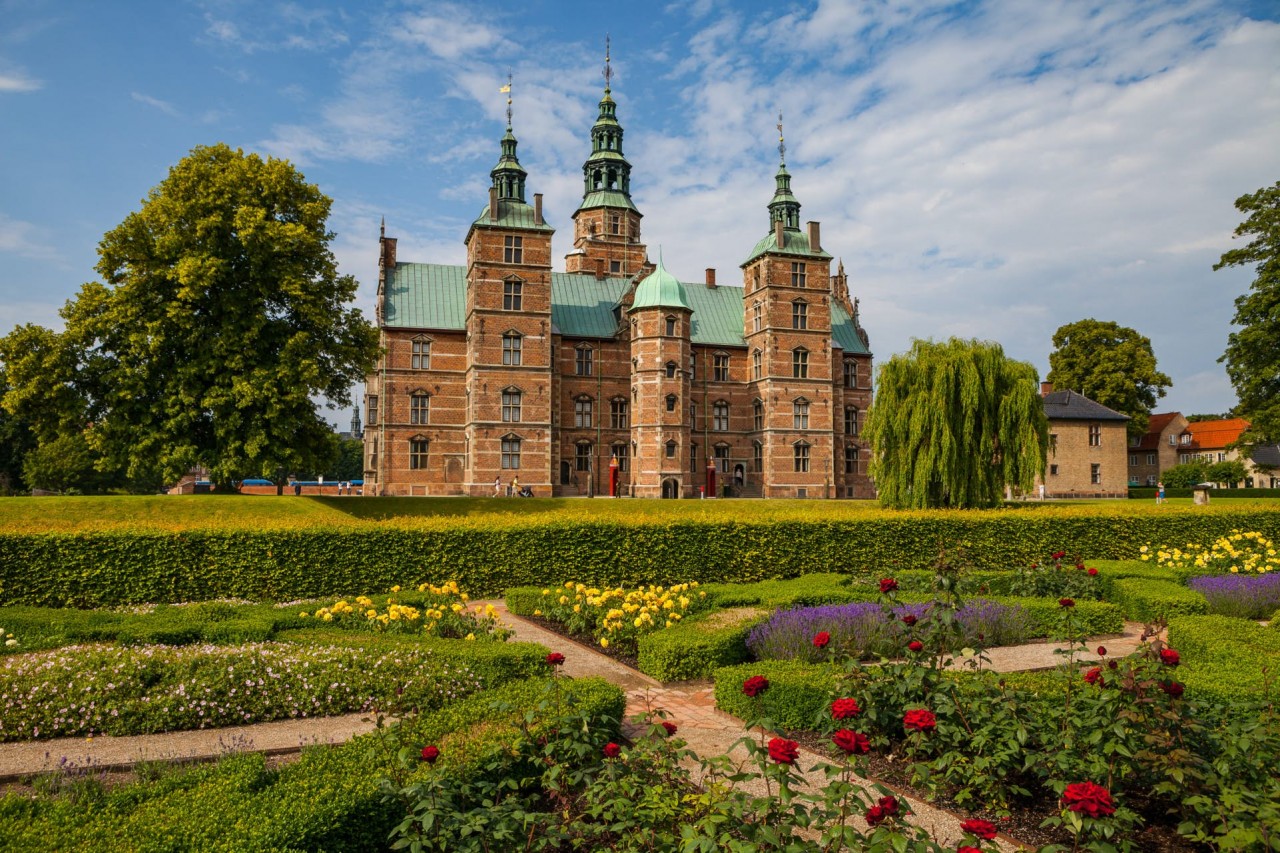 |
| Photo: Lonely Planet |
Rosenborg Castle is a renaissance castle located in Copenhagen, Denmark. The castle was originally built as a country summerhouse in 1606 and is an example of Christian IV's many architectural projects. It was built in the Dutch Renaissance style, typical of Danish buildings during this period, and has been expanded several times, finally evolving into its present condition by the year 1624. Architects Bertel Lange and Hans van Steenwinckel the Younger are associated with the structural planning of the castle.
The castle was used by Danish regents as a royal residence until around 1710. After the reign of Frederik IV, Rosenborg was used as a royal residence only twice, and both these times were during emergencies. The first time was after Christiansborg Palace burned down in 1794, and the second time was during the British attack on Copenhagen in 1801.
The castle is open to the public for tours and houses a museum exhibiting the Royal Collections, artifacts spanning a breadth of royal Danish culture, from the late 16th century of Christian IV to the 19th century. Some of these articles once belonged to the nobility and the aristocracy. The castle, now state property, was opened to the public in 1838.
Of special interest to tourists is a treasury displaying the Crown Jewels and the Danish Crown Regalia located in the castle. A Coronation Carpet is also stored there. The Throne Chair of Denmark is located in the castle. In the summertime, flowers bloom in front of the castle in the castle garden.
6. Amalienborg Palace
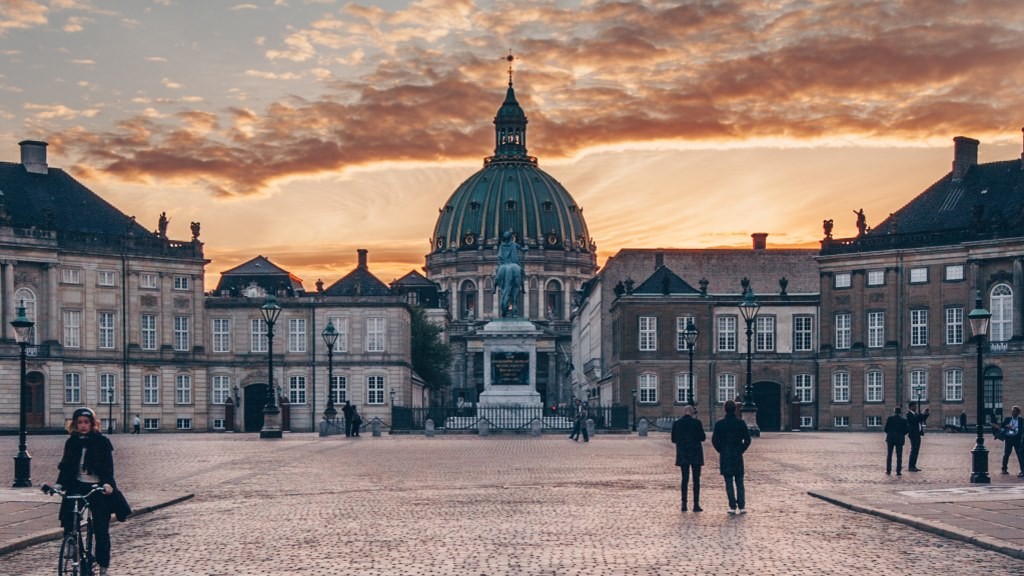 |
| Photo: Visit Copenhagen |
Amalienborg is the home of the Danish royal family and is located in Copenhagen, Denmark. It consists of four identical classical palace façades with rococo interiors around an octagonal courtyard (Danish: Amalienborg Slotsplads); in the centre of the square is a monumental equestrian statue of Amalienborg's founder, King Frederick V.
Amalienborg was originally built for four noble families; however, when Christiansborg Palace burned on 26 February 1794, the royal family bought the palaces and moved in. Over the years various monarchs and their families have resided in the four different palaces.
Situated between the city and the harbor, Amalienborg is a major work of Danish architecture designed by the architect Nicolai Eigtved in the 1750s. Four palaces surround Amalienborg Palace Square, with its equestrian statue of King Frederik V. The palaces were originally built as residences for four high-ranking aristocrats, but when the old Christiansborg Palace burnt down in 1794 the royal family took up residence at Amalienborg. Since then Denmark’s reigning monarchs have lived in Amalienborg’s palaces.
Christian VII’s Palace is Queen Margrethe II’s palace for guests and official receptions. The palace, which was built in 1750–54 for Count Adam Gottlob Moltke, forms the setting for official events such as the annual New Year Banquet.
Christian VIII’s Palace houses the museum Amalienborg where you can take a royal journey through the past 150 years of the monarchy, and visit the private chambers of previous kings and queens, maintained exactly as they lived in them. The museum also introduces visitors to the daily lives of today’s royal family.
7. Christiansborg Palace
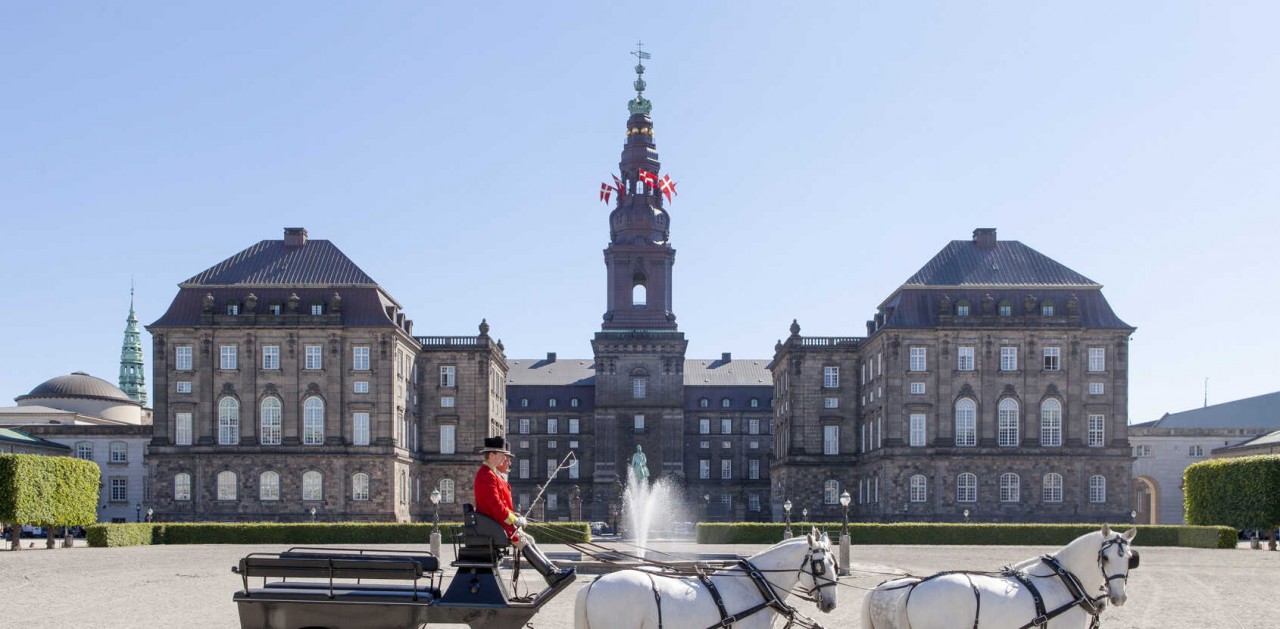 |
| Photo: Kongelige Slotte |
Christiansborg Palace is a palace and government building on the islet of Slotsholmen in central Copenhagen, Denmark. It is the seat of the Danish Parliament (Folketinget), the Danish Prime Minister's Office, and the Supreme Court of Denmark. Also, several parts of the palace are used by the Danish monarch, including the Royal Reception Rooms, the Palace Chapel, and the Royal Stables.
The palace is thus home to the three supreme powers: the executive power, the legislative power, and the judicial power. It is the only building in the world that houses all three of a country's branches of government. The name Christiansborg is thus also frequently used as a metonym for the Danish political system, and colloquially it is often referred to as Rigsborgen ('the castle of the realm') or simply Borgen ('the castle').
The present building, the third with this name, is the last in a series of successive castles and palaces constructed on the same site since the erection of the first castle in 1167. Since the early fifteenth century, the various buildings have served as the base of the central administration; until 1794 as the principal residence of the Danish kings and after 1849 as the seat of parliament.
The palace today bears witness to three eras of Danish architecture, as the result of two serious fires. The first fire occurred in 1794 and the second in 1884. The main part of the current palace finished in 1928, is in the historicist Neo-baroque style. The chapel dates back to 1826 and is in a neoclassical style. The showgrounds were built from 1738–46, in a baroque style.
8. Koldinghus Castle
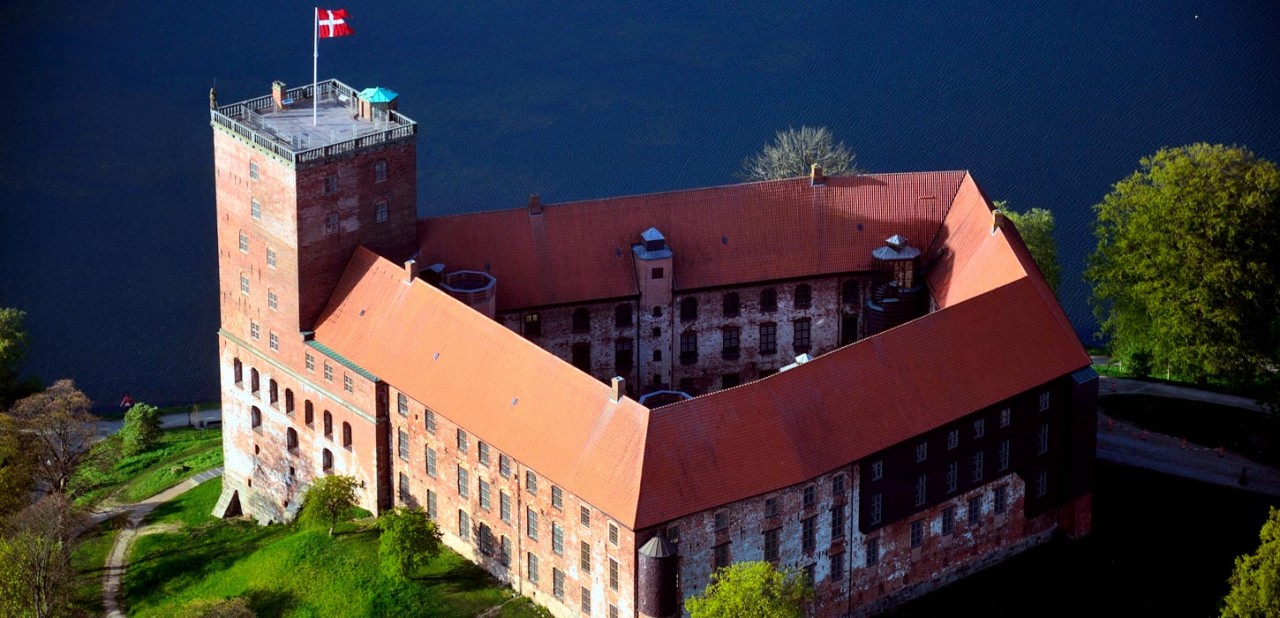 |
| Photo: kolding |
The present buildings of Koldinghus Castle are from the 15thand 16th centuries, but Koldinghus was given its characteristic profile when the young Christian IV built the Great Tower around 1600.
In 1808 the castle burned down when Spanish troops were billeted there and lay in ruins for many years. In the 1980s the castle ruin was subjected to an award-winning restoration with deliberate use of materials that are different from the original ones.
Today the castle houses a museum and has emerged as a sightseeing attraction of great historical and architectural value where, besides big international temporary exhibitions, one can see art and the country’s biggest collection of modern Danish silver.
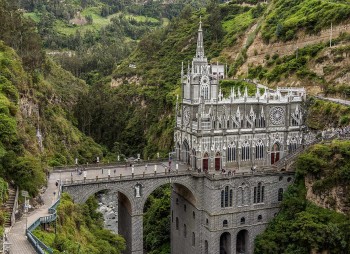 | 8 Churches With Unique Architecture Designs In The World From Las Lajas Sanctuary to Cadet Chapel, these churches will astonish you for their unusual, unique, and extraordinary architectural designs that draw my visitors and ... |
 | 12 Vietnamese Cafes Ranked Among Top 80 in Asia Recently, the 2021 Top80 announced 12 Vietnam's cafe shops that were ranked among the top 80 cafes in Asia. |
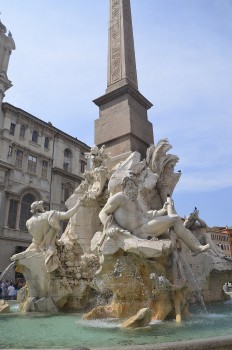 | Top 8 Amazing Places Featuring In Dan Brown’s Novels From the Fountain of the Four Rivers in "Angels and Demons" to Guggenheim Bilbao Museum in "Inferno", these are the wonderful places where Professor Robert ... |
Recommended
 World
World
Pakistan NCRC report explores emerging child rights issues
 World
World
"India has right to defend herself against terror," says German Foreign Minister, endorses Op Sindoor
 World
World
‘We stand with India’: Japan, UAE back New Delhi over its global outreach against terror
 World
World
'Action Was Entirely Justifiable': Former US NSA John Bolton Backs India's Right After Pahalgam Attack
Popular article
 World
World
US, China Conclude Trade Talks with Positive Outcome
 World
World
Nifty, Sensex jumped more than 2% in opening as India-Pakistan tensions ease
 World
World
Easing of US-China Tariffs: Markets React Positively, Experts Remain Cautious
 World
World







